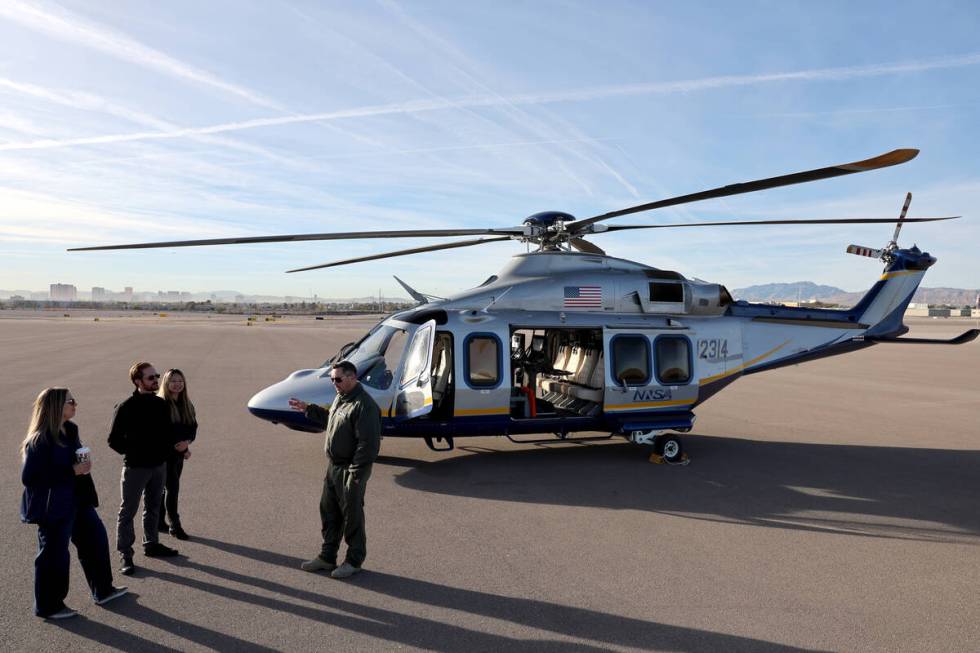Look up: Radiation-detecting helicopter to scan Strip on New Year’s Eve

Early on New Year’s Eve, a helicopter will fly 300 feet above the ground on the Strip, weaving through the maze of towering resorts for a matter of national security.
It’s a calculated route that only a select few pilots are trained to follow, all to assess one particular hazard that Las Vegas has a storied history with: radiation. The nuclear radiation assessments the helicopter will produce establish a baseline for radiation that naturally occurs, checking for any anomalies that decision-makers should know about.
In a city that once made nearby nuclear explosions into a tourist attraction, this testing is still important today.
A new, low-flying AW-139 helicopter, equipped with gamma ray detectors, will hover at half the height of the High Roller on Dec. 29 and Dec. 31. It’s a technology used before major events, including a scan done recently in Washington, D.C., ahead of President-elect Donald Trump’s inauguration.
“If you see us, give us a wave,” said Mark Norsworthy, a program manager at the Nevada National Security Site’s Remote Sensing Laboratory.
No cause for concern
The radiation studies are critical to establishing a baseline understanding of a city’s radioactivity, should any comparisons need to be made after a disaster at a nuclear plant or if there were a nuclear attack, Norsworthy said.
The closest nuclear power plant is in Arizona, about 55 miles west of Phoenix. Nevada has historically been floated as a dumping ground for nuclear waste, however, with the controversial Yucca Mountain repository site.
“The good news is that nuclear incidents involving large-scale contamination of land are extremely rare,” Norsworthy said. “People should rest easy knowing that there’s a crew of scientists, pilots and several aircrafts available to be on call if there ever was a nuclear radiological emergency.”
While it’s known for its proximity to the Nevada Test Site that tested nuclear weapons until 1992, Las Vegas is no more radioactive than any major city, he said. Most of the legacy contamination is contained within the site itself.
In addition to creating a reference point, scientists are tracking sources of radiation from construction and medical devices, Norsworthy said. A separate team on the ground would confirm what the source is.
Anything that seems out of place would be reported to local leaders, he said.
“We’re just trying to make sure that sources are where they’re supposed to be,” Norsworthy said. “The basic purpose of these baseline surveys is that while we’re flying, if we see something that’s out of place, we can report it.”
Real-time reports
During the flights, Norsworthy sits in the back, monitoring the gamma ray detectors through a computer software. The detectors are black boxes full of crystals that blink when they interact with a gamma ray.
Within an hour of landing, scientists have a rough map of what they saw.
Mike Toland, who will be one of the pilots on the New Year’s Eve crew, said the new AW-139 helicopters are much faster and can carry more detectors. He said the highly skilled pilots provide an integral public service.
“That’s our primary mission: to deal with those kind of very-bad-day situations for our country,” Toland said.
Contact Alan Halaly at ahalaly@reviewjournal.com. Follow @AlanHalaly on X and @alanhalaly.bsky.social on Bluesky.